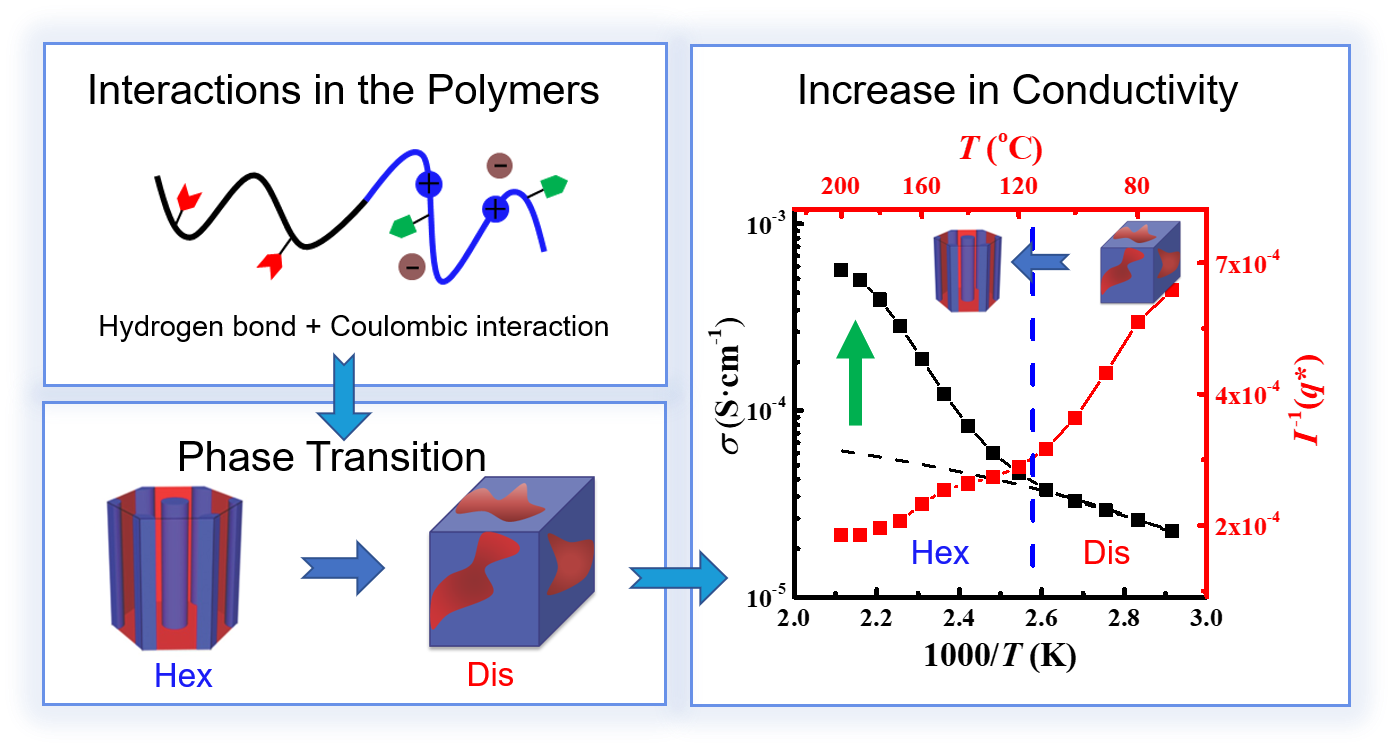Lower disorder-to-order transition (LDOT) phase behavior is seldom observed in block copolymers (BCPs). Design of LDOT BCPs is important for broadening the applications and improving the high temperature properties of BCPs. In this work, the LDOT phase behavior was first achieved in the strongly interacting BCPs consisting of poly(ethylene oxide) (PEO) and poly(ionic liquid) (PIL) blocks (EOm-b-(IL-X)n, X: counterion) by introducing two extra strong forces (hydrogen-bonding and Coulombic interaction) with different temperature dependences. It is also found that the LDOT phase behavior of the EOm-b-(IL-X)n BCPs can be regulated by molecular weight (related to mixing entropy), counterion, and salt doping. Increasing counterion size and salt content shifts the disorder-to-order transition temperature (TDOT) to higher temperature, whereas a higher molecular weight leads to a lower TDOT. Based on our findings, some general rules for design of LDOT phase behavior in the strongly interacting BCPs were proposed. Moreover, the conductivity of the EOm-b-(IL-X)n BCPs was correlated with the LDOT phase behavior. A remarkable increase in conductivity after LDOT, i.e., a thermo-activated transition, is observed for the EOm-b-(IL-X)n BCPs, which can be attributed to the cooperative effects of temperature rising and LDOT.

原文链接:https://pubs.acs.org/doi/epdf/10.1021/acs.macromol.8b00227